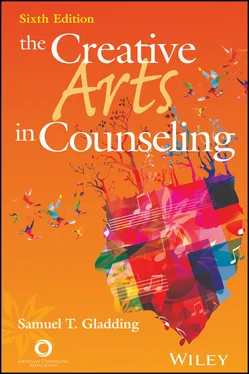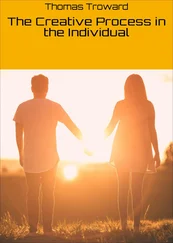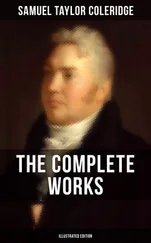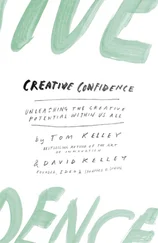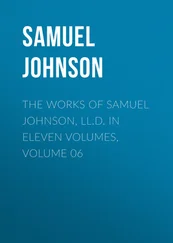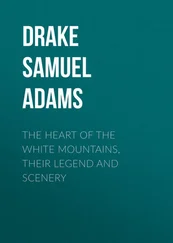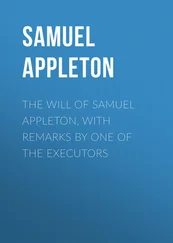Samuel T. Gladding - The Creative Arts in Counseling
Здесь есть возможность читать онлайн «Samuel T. Gladding - The Creative Arts in Counseling» — ознакомительный отрывок электронной книги совершенно бесплатно, а после прочтения отрывка купить полную версию. В некоторых случаях можно слушать аудио, скачать через торрент в формате fb2 и присутствует краткое содержание. Жанр: unrecognised, на английском языке. Описание произведения, (предисловие) а так же отзывы посетителей доступны на портале библиотеки ЛибКат.
- Название:The Creative Arts in Counseling
- Автор:
- Жанр:
- Год:неизвестен
- ISBN:нет данных
- Рейтинг книги:3 / 5. Голосов: 1
-
Избранное:Добавить в избранное
- Отзывы:
-
Ваша оценка:
- 60
- 1
- 2
- 3
- 4
- 5
The Creative Arts in Counseling: краткое содержание, описание и аннотация
Предлагаем к чтению аннотацию, описание, краткое содержание или предисловие (зависит от того, что написал сам автор книги «The Creative Arts in Counseling»). Если вы не нашли необходимую информацию о книге — напишите в комментариях, мы постараемся отыскать её.
*To purchase print copies, please visit the ACA website here
*Reproduction requests for material from books published by ACA should be directed to permissions@counseling.org
The Creative Arts in Counseling — читать онлайн ознакомительный отрывок
Ниже представлен текст книги, разбитый по страницам. Система сохранения места последней прочитанной страницы, позволяет с удобством читать онлайн бесплатно книгу «The Creative Arts in Counseling», без необходимости каждый раз заново искать на чём Вы остановились. Поставьте закладку, и сможете в любой момент перейти на страницу, на которой закончили чтение.
Интервал:
Закладка:
Music and medicine were at one time strong allies because of their similar emphasis on wholeness (Horden, 2017). Indeed, in some countries, such as France, this connection is still strong, and “psycho-musical techniques are regarded as excellent and privileged means of exploring dreams and ideas, the conscious and the unconscious, the affective and emotional worlds of the individual, and for provoking catharsis” (Owens, 1986, p. 302). In hospital settings, music may take one’s mind off unpleasant experiences and promote spontaneous interactions. In addition, music is used worldwide to promote positive mental health, especially in psychiatric hospitals (Covington, 2001).
Music is both a passion and a diversion, and its uses in counseling are geared accordingly. Among persons for whom music is a central part of life (i.e., a passion), identity is strongly influenced by their shared values with select performers, writers, and other listeners. These individuals are usually quite willing to participate in counseling activities that involve music. In this type of situation, many of the words, sounds, and feelings these people embrace as their own actually originated with someone else and have been borrowed and incorporated by these people. The extent of music’s healing and helping power in counseling is related to how deeply involved with it people are and what disorders or diseases they may be dealing with (Bruscia et al., 2009). Because their identity is partially wrapped up in music, people with a passion for it are eager to be exposed to musical experiences. Therefore, counselors are usually more successful using music when working with these clients than they would be when working with those for whom music is only a diversion. For instance, a person of any age who likes music and who has lost a father may find Ashley Gearing’s lyrical country song “Can You Hear Me When I Talk to You?” to be both cathartic and comforting (Mansfield, 2003). By being aware of the lyrics and melodies that clients have adopted and other complementary music, counselors who use music create conditions that foster increased communication and understanding (Gladding et al., 2003, 2008; A. White, 1985).
Creative Reflection
When have you or someone you know found a song or a piece of music to be comforting or uplifting? What piece of music was it? How was your mood altered? How do you feel about the music when you hear it now?
In addition, music in counseling may be focused on the interests and tastes of clients. A musical approach may take the form of writing, performing, or listening to certain types of sounds selected by counselors. The idea behind this activity is to foster therapeutic expression by having clients participate in experiences with unfamiliar music. For example, clients may play a new instrument in a predetermined way and make discoveries about their abilities never before imagined. Similarly, ethnic music (i.e., music identified with a particular culture or subculture) may motivate “otherwise unresponsive mainstream music therapy clients into musical experiences through the exotic appeal of unfamiliar musical styles and approaches to music making” (J. J. Moreno, 1988a, p. 17). Even for clients who are unfamiliar with classical music, this genre can have a powerful effect. When chosen carefully and played softly, classical music “can be a tremendous aid in producing an atmosphere conducive to creative activity” (Nadeau, 1984, p. 68). Compositions by Schubert, Copeland, Strauss, Tchaikovsky, and Pachelbel, for example, can create an ambiance that encourages imagination and productivity.
Key to deciding on what music activity, if any, to choose are the goals of counseling (whether preventive or remedial) and the personalities of the individuals involved. For example, some individuals prefer classics by Beethoven, Bach, Brahms, and Mozart, and others opt for popular music by Third Eye Blind, Foo Fighters, Sheryl Crow, Jay-Z, Justin Timberlake, Taylor Swift, James Taylor, Coldplay, Ice Cube, and Jennifer Lopez. Still other individuals prefer energetic African- or Japanese-oriented group rhythms performed on drums or traditional Indian and Asian music, which is helpful in stimulating imagery and fostering meditation.
Individual need is yet another crucial variable to consider in music-oriented counseling. For example, trauma victims need calmer types of music than those who are not so physically or psychologically distressed. Likewise, aerobic and exercise groups need and prefer rock, pop, and new age music. With regard to needs and music, it is helpful to realize that some clients need to be actively involved in making music (e.g., individuals who are depressed), but for others, simply listening to music may be most beneficial (e.g., individuals who are anxious or manic).
Furthermore, the decision as to which music activities to use in counseling is rooted in genuine sharing and self-disclosure about whether both parties in the counseling process are open to exploring this means of help. If the participants reach consensus, the musical pieces used are likely to produce positive results because an atmosphere of trust and expectation has been created. These qualities, along with the skills of counselors and the courage of clients to participate, ultimately dictate how powerful the musical experience will be. Well-chosen music used in collaboration with the client has the capacity to calm, relax, and help the client feel secure (Hodas, 1994; Owens, 1986). There is no substitute for personalizing the process.
Practice of the Use of Music in Counseling
The degree to which counselors and clients relate to one another when music is a part of counseling depends on whether music is used as therapy or in therapy (Bruscia, 1987). When music is used as therapy, the counselor is likely to take an active role, whereas when it is used in therapy, the counselor’s involvement may vary considerably.
Music Therapy
Music as therapy is usually known as music therapy . Techniques associated with music therapy are production, reproduction, and reception. Production techniques focus on emotional expression and the creation of relationships through musical improvisation in which the client and therapist create something musically new. Reproduction techniques involve the client and therapist playing or singing precomposed pieces of music as well as learning or practicing musical skills. These pieces may be especially powerful in exploring memoires and relationships. Reception techniques involve the client listening to live or recorded music. These musical experiences may be used to focus on conscious awareness of the client’s current mental state as well as to facilitate relaxation or pain management (Mössler et al., 2012; Verstegen & Silverman, 2018).
In music therapy, sound, whether played or listened to, often serves as a musical symbol of a symptom (McClary, 2007). According to the American Music Therapy Association (AMTA), music therapy is offered as a degree in more than 70 American colleges and universities and is practiced all over the world. In addition, in 2015, AMTA formally defined music therapy as “the clinical and evidence-based use of music interventions to accomplish individualized goals within a therapeutic relationship by a credentialed professional who has completed an approved music therapy program” (AMTA, n.d., para. 1). It is meant to effect positive changes in the psychological, physical, cognitive, or social functioning of individuals. Thus, the process is goal directed. It may take one of many forms, but according to Peters (2001, pp. 6–8), music therapy has five main elements:
1 It is prescribed.
2 It involves the use of musical or music activities; for example, “singing, playing musical instruments, listening to music, composing or creating music, moving to music, or discussing lyrics and characteristics of songs or instrumental compositions” (p. 6).
Читать дальшеИнтервал:
Закладка:
Похожие книги на «The Creative Arts in Counseling»
Представляем Вашему вниманию похожие книги на «The Creative Arts in Counseling» списком для выбора. Мы отобрали схожую по названию и смыслу литературу в надежде предоставить читателям больше вариантов отыскать новые, интересные, ещё непрочитанные произведения.
Обсуждение, отзывы о книге «The Creative Arts in Counseling» и просто собственные мнения читателей. Оставьте ваши комментарии, напишите, что Вы думаете о произведении, его смысле или главных героях. Укажите что конкретно понравилось, а что нет, и почему Вы так считаете.
